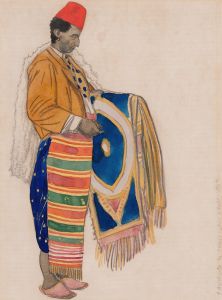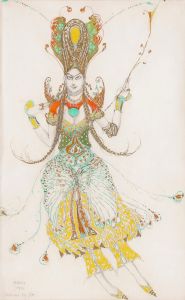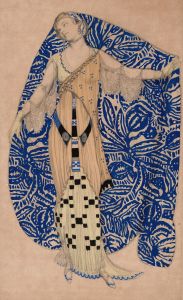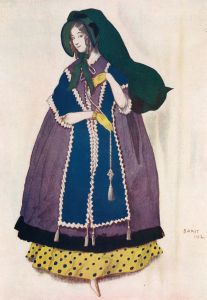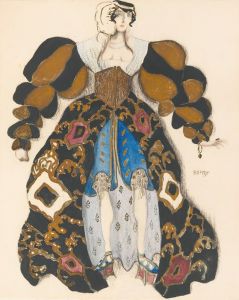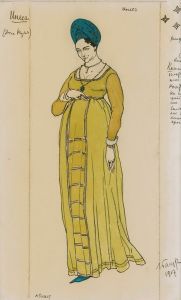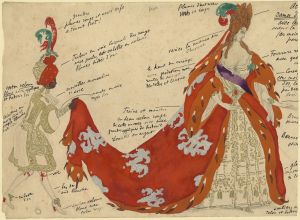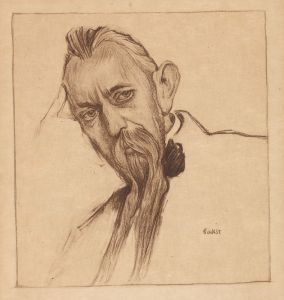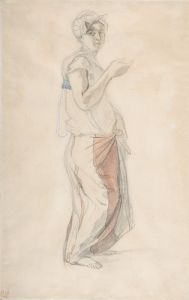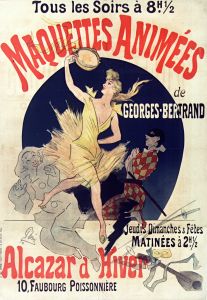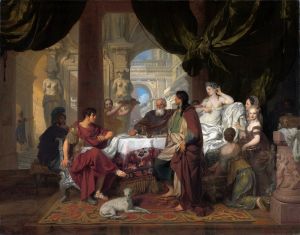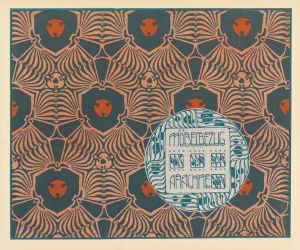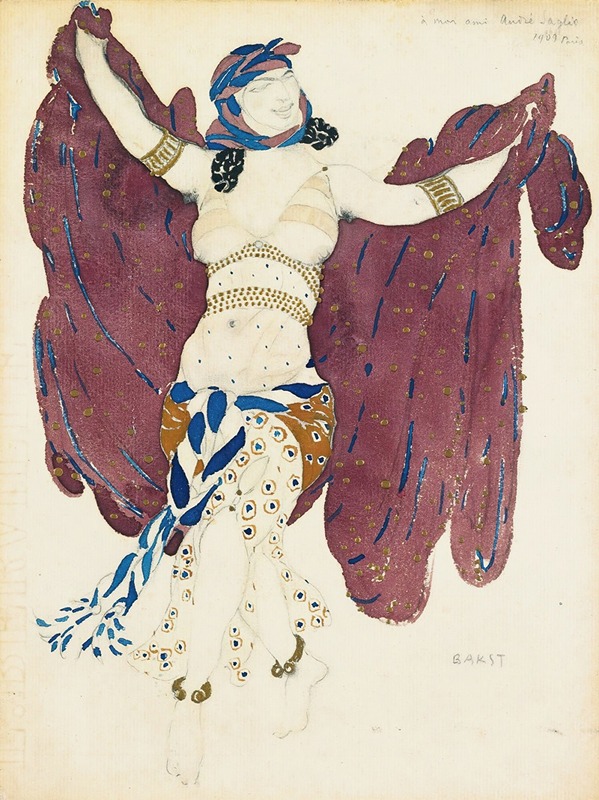
Costume Design For A Syrian Dancer In Cleopatra
A hand-painted replica of Léon Bakst’s masterpiece Costume Design For A Syrian Dancer In Cleopatra, meticulously crafted by professional artists to capture the true essence of the original. Each piece is created with museum-quality canvas and rare mineral pigments, carefully painted by experienced artists with delicate brushstrokes and rich, layered colors to perfectly recreate the texture of the original artwork. Unlike machine-printed reproductions, this hand-painted version brings the painting to life, infused with the artist’s emotions and skill in every stroke. Whether for personal collection or home decoration, it instantly elevates the artistic atmosphere of any space.
Léon Bakst, a prominent Russian painter and scene and costume designer, is renowned for his work with the Ballets Russes, a groundbreaking ballet company that brought together some of the most influential artists of the early 20th century. Among his many contributions to the world of theater and dance, Bakst's costume designs stand out for their vibrant colors, intricate patterns, and innovative use of materials. One of his notable works is the costume design for a Syrian dancer in the ballet "Cleopatra."
"Cleopatra" was a ballet originally choreographed by Mikhail Fokine and first performed by the Ballets Russes in 1909. The production was a reimagining of the earlier ballet "Une Nuit d'Égypte," which premiered in 1908. The story of "Cleopatra" revolves around the legendary Egyptian queen and her romantic entanglements, set against the backdrop of ancient Egypt. The ballet was known for its exotic themes and opulent staging, which were enhanced by Bakst's imaginative designs.
Bakst's costume design for the Syrian dancer in "Cleopatra" exemplifies his ability to blend historical inspiration with modern artistic sensibilities. The costume is characterized by its rich textures and bold colors, reflecting Bakst's fascination with the Orient and his desire to evoke the opulence of ancient civilizations. The design likely features flowing fabrics, intricate embroidery, and elaborate accessories, all of which contribute to the overall exotic and luxurious aesthetic of the production.
Bakst's work on "Cleopatra" and other productions for the Ballets Russes had a significant impact on the world of fashion and design. His costumes were not only functional for the dancers but also works of art in their own right, influencing contemporary fashion designers and artists. The vibrant colors and patterns he employed became a hallmark of his style and were widely admired for their originality and beauty.
The collaboration between Bakst and the Ballets Russes marked a turning point in theatrical design, as it moved away from the more traditional and restrained styles of the 19th century towards a more expressive and avant-garde approach. Bakst's designs helped to establish the Ballets Russes as a leader in the world of modern art and performance, and his influence can still be seen in theater and fashion today.
In summary, Léon Bakst's costume design for a Syrian dancer in "Cleopatra" is a testament to his artistic vision and his ability to bring a sense of drama and exoticism to the stage. His work with the Ballets Russes not only enhanced the visual impact of their productions but also left a lasting legacy in the fields of art and design. Through his innovative use of color, texture, and form, Bakst helped to redefine the possibilities of costume design, making it an integral part of the storytelling process in ballet and theater.





